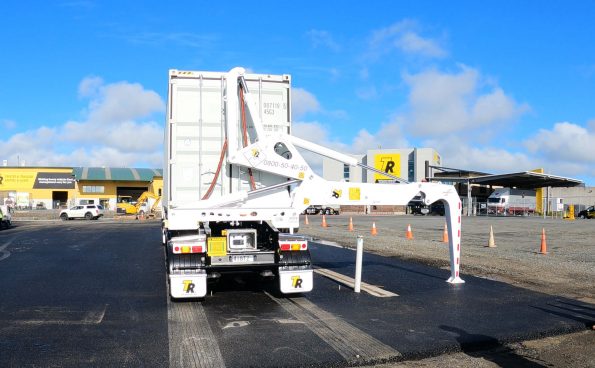When picking up a container with a sideloader, the surface, the container position and the gradient are three of the most important factors to consider. Drivers should be able to conduct a risk assessment of a site’s hazards, as taught in sideloader training, but not every forklift operator moving an empty container understands what a sideloader operator needs, or the previous driver simply dropped the box where the client wanted, despite knowing that the driver picking it up would have problems. This reflects a lack of conscientiousness or regard for other drivers.
If you are dropping off a container that will be filled, then here are the things you should consider to make the job easier for the driver who is collecting the container. The brand of sideloader and the types of stabilisers legs will influence where the container can be dropped because each sideloader configuration has its strengths and weaknesses.
Ground firmness
If the ground is at all soft, or likely to become soft if it rains, this can become a problem when the container is loaded. In dry weather, your stabiliser legs might not sink in, and the empty container might sit flat, but get some load in the container and it can start to sink in. Plus, when you try to find a decent patch of land to put your stabiliser legs, they start to sink when you go to lift up the container. In this case, you’ll need to lower the container and try to find something to act as a large surface area blocking pad for the stabiliser legs.
In some cases, the sinking might happen at a critical time which tips the vehicle over.
Gradients
Sideloader manufacturers have a tolerance for how many degrees from horizontal the ground can be before it’s dangerous to pick up a container. It’s worse if it’s tilted towards the offside rather than the lifting side because there aren’t always offside stabilisers. If there’s too much forward or rear tilt, the container will swing into the crane arms, and you may need to try to put the container on one corner at a time, which risks bending the twistlock.
Hammar sideloaders struggle more with gradients than Swinglift because the stabilisers are closer to the ends of the container.
Walls and other objects
Sideloaders with telescopic legs can pick up containers that are close to a wall, whereas some models with leg-over stabilisers that don’t have dual modes need much more room. Also, a twenty-foot container being placed in the forward position needs to be in a space where the truck can park alongside, i.e. it can’t be placed in a corner, otherwise the driver has to load it to the rear position, move away and then swap it to the forward position.

